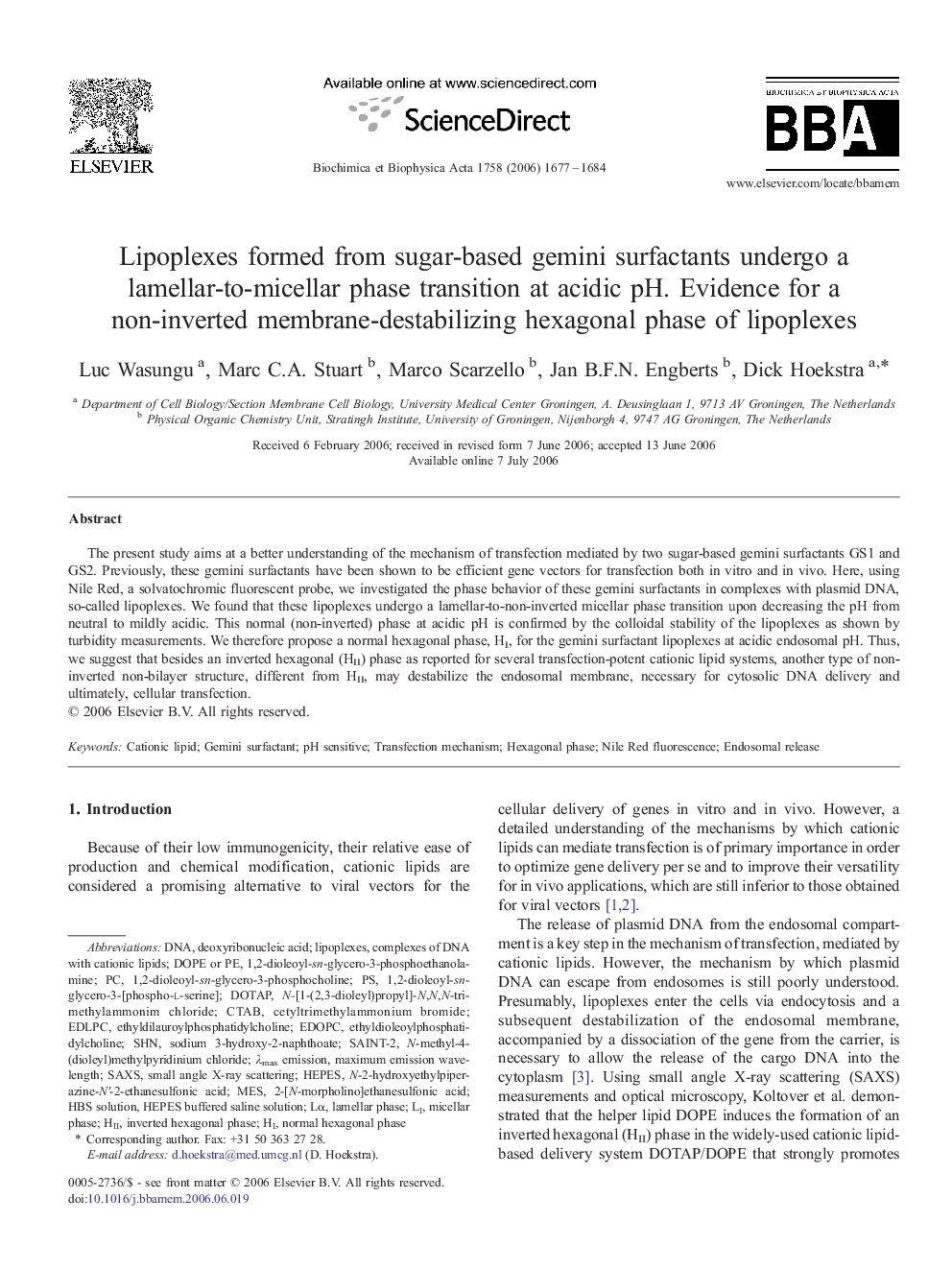| کد مقاله | کد نشریه | سال انتشار | مقاله انگلیسی | نسخه تمام متن |
|---|---|---|---|---|
| 1946002 | 1053283 | 2006 | 8 صفحه PDF | دانلود رایگان |

The present study aims at a better understanding of the mechanism of transfection mediated by two sugar-based gemini surfactants GS1 and GS2. Previously, these gemini surfactants have been shown to be efficient gene vectors for transfection both in vitro and in vivo. Here, using Nile Red, a solvatochromic fluorescent probe, we investigated the phase behavior of these gemini surfactants in complexes with plasmid DNA, so-called lipoplexes. We found that these lipoplexes undergo a lamellar-to-non-inverted micellar phase transition upon decreasing the pH from neutral to mildly acidic. This normal (non-inverted) phase at acidic pH is confirmed by the colloidal stability of the lipoplexes as shown by turbidity measurements. We therefore propose a normal hexagonal phase, HI, for the gemini surfactant lipoplexes at acidic endosomal pH. Thus, we suggest that besides an inverted hexagonal (HII) phase as reported for several transfection-potent cationic lipid systems, another type of non-inverted non-bilayer structure, different from HII, may destabilize the endosomal membrane, necessary for cytosolic DNA delivery and ultimately, cellular transfection.
Journal: Biochimica et Biophysica Acta (BBA) - Biomembranes - Volume 1758, Issue 10, October 2006, Pages 1677–1684